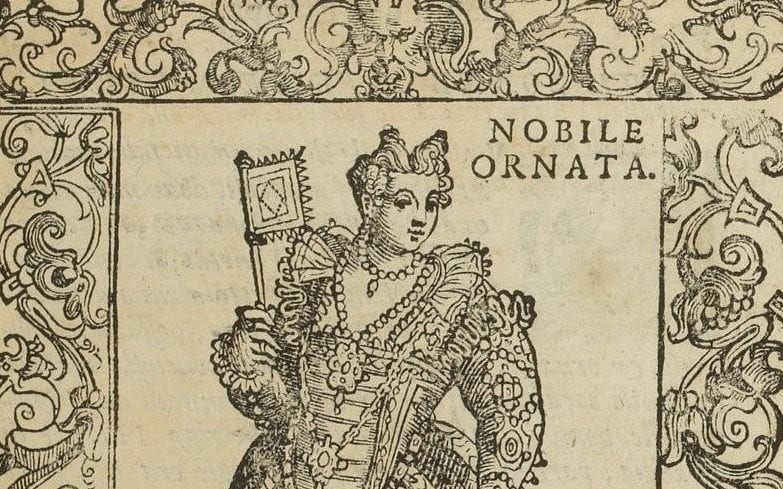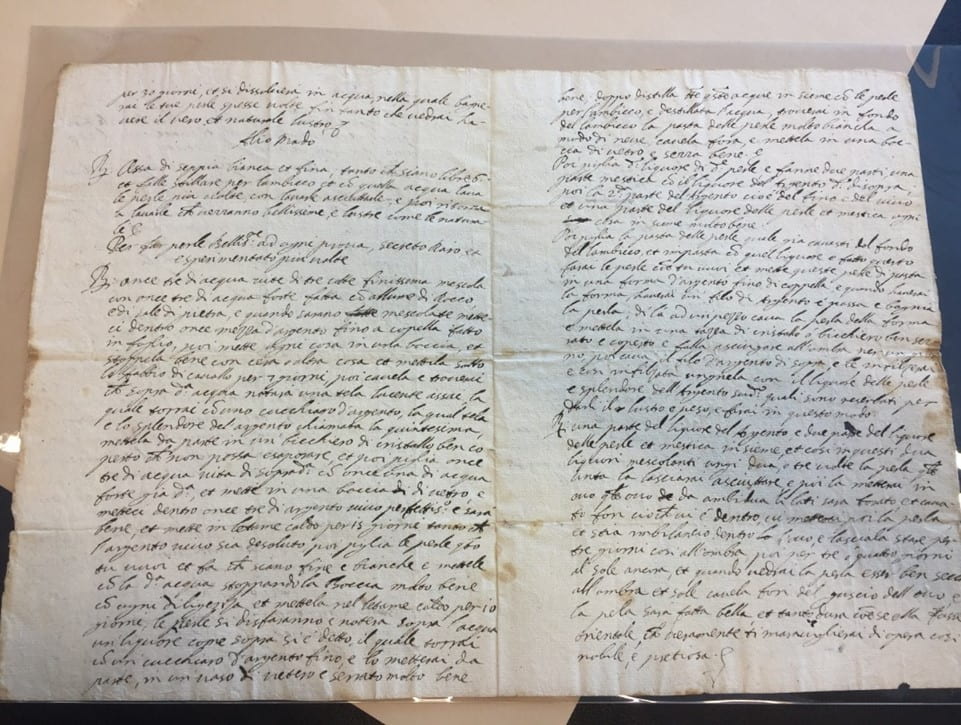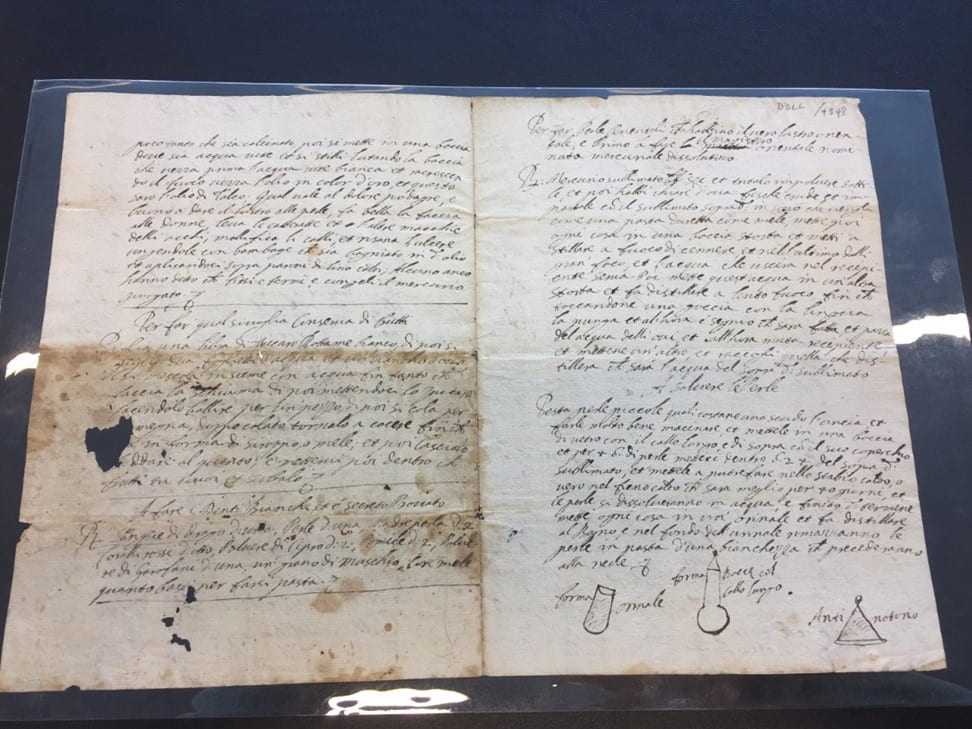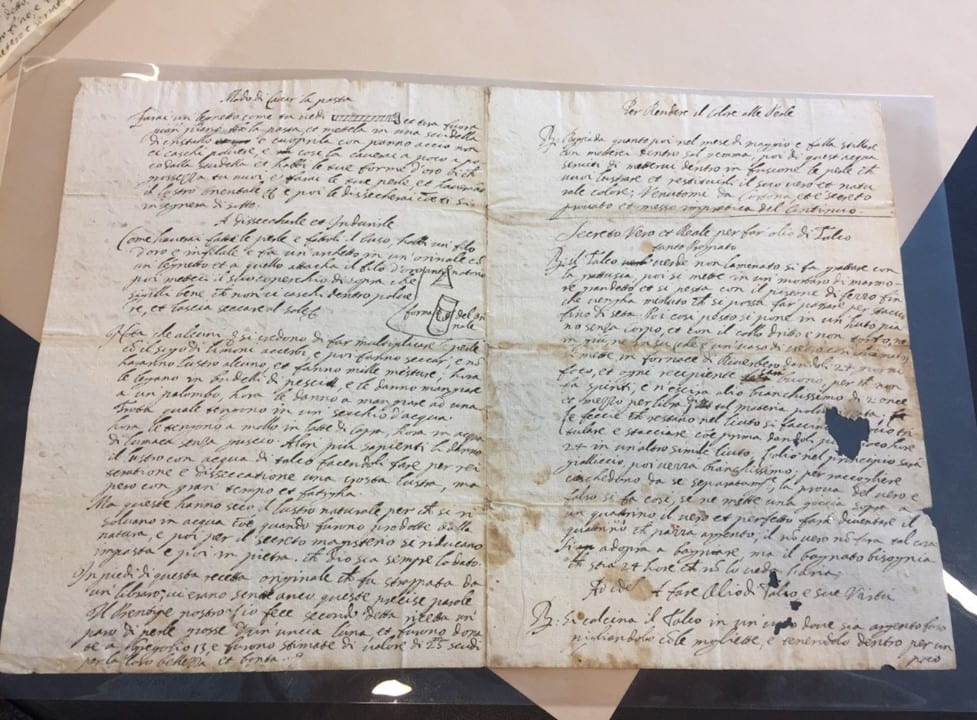By Giuseppe Bruno-Chomin
We tend to believe “forgery” is immoral because it is illegal. But “forgery” pivots around the idea that “imitations” can be equal or even superior to an “original.” Might we then also think of “forgery” as a practical manipulation of the values we ascribe to material objects? For centuries people have, for instance, replicated precious stones. But what did gemstone “forgery”—if it can so be called—truly aim to accomplish? And, perhaps more importantly, what does this practice reveal about the material culture of the society in which it occurred?
Throughout history the pearl—perhaps more than any other gem—has been the object of a cult-like obsession. Pliny and Seneca, in Natural History and On Benefits, both remark on the penchant for pearls in antiquity. Pearls, also called margarites, were prized by many 16th century Europeans, including Caterina de’ Medici (1519-1589), Henry VIII (1491-1547), and Elizabeth I (1533-1603). And their popularity was recorded by Italian painter and engraver, Cesare Vecellio (1521-1601), in his popular fashion anthology, Degli habiti antichi et moderni (1590), wherein pearls are depicted as an embellishment par excellence.
In time, however, the pearl also became an instrument of the sociopolitical machine. Religious authorities sought to regulate pearl ownership through sumptuary laws, and financial concerns occasionally superseded those of religious modesty. We also read in Disciplinare il lusso, la legislazione suntuaria in Italia e in Europa tra Medioevo ed Età Moderna, edited by Maria Giuseppina Muzzarelli and Antonella Campanini, that some rulers designed pearl protocol to their own advantage. These restrictions—though perhaps unintendedly—empowered and emboldened a faux pearl trade. In 16th century Venice, pearl “forgery” became so advanced that even wearing a pearl-like item could result in a hefty fine. And rather than surrender illegally owned pearls, many women either paid a penalty or turned in imitations instead. Evidence of the link between sumptuary laws and pearl “forgery” is even documented by Vecellio who writes that, “…in their place, many women often wear round items similar to pearls, since prostitutes are prohibited to wear them.” (portano molte volte in loco di perle certi tondini simili alle perle per esser vietato a donne di partito).
“Forgers” had become so skilled that imitation pearls were easily mistaken for those naturally occurring. Paride Nucchelli Colucci has observed that because assets and material worth influenced social status and the outcomes of marriage, gemstone imitation developed to mitigate the need for tangible and ostensible wealth. In the early modern period, the so-called “oriental pearl” was favored by Europeans for its brilliance and “exotic” associations. And the pearl frenzy was so widespread that “books of secrets” boasted an array of “do-it-yourself” recipes. Girolamo Ruscelli, under the alias Alessio Piemontese, in his De’ segreti (1555), provides a recipe for faux pearls. He even promises that these would surpass the quality of natural stones, and guarantee a profit, if presented in decorative boxes and displayed in small quantities.
Two anonymous manuscripts, at the University of Pennsylvania’s Kislak Center [dated 1585-1599, in Misc. Mss. Box 2, Folder 24], shed light on the practice of early modern pearl “forgery.” But the 16th century art of pearl imitation went beyond replicating organic stones from scratch. On occasion, alchemists undertook to modify “undesirable” pearls to enhance their appeal and value. These “forgeries” were considered equal, if not superior, to their naturally occurring counterparts. Indeed, as Jessica Kerwin Jenkins discusses, Venetian pearl makers were so very skilled that Elizabeth I purchased hundreds of imitations, which she combined with natural pearls, to decorate her dresses.
The “secrets” contained in these manuscripts range from increasing pearl size [ad ingrossare una perla nella grosseza che vorrai], to the ideal shape [per far la veste alle perle], to giving them color [per rendere il colore alle perle]. These “secrets” also claim to replicate the highly valued “oriental pearl,” [per fare perle orientali che habbino il vero lustro orientale…] and their techniques diverge and vary. One recipe requires the dissolution and reconstitution of smaller pearls, another calls for the application of mercuric chloride, and another prefers the slimy secretion of talc-fed snails. A number of practical suggestions are also provided:
Note that some people believe they can create larger pearls with the juice of unripe lemons, but when they dry, they have no sheen […] Some people line them in the bowels of fish, or feed them to a dogfish, that they keep in a bucket of water. Others soak them in goat’s milk or in snail slime […] Those who are wiser give them their luster with talc water, by repeatedly applying and drying until they acquire a shiny coating. But this requires much energy and time.
Explicatory illustrations might indicate active usage. And a third-party testimonial, embedded within the text, seems to imply that they were successful: “…I made a pair of large pearls, each weighing an ounce, that were given to Gregory XIII and valued at a sum of 25 thousand scudi for their beauty and greatness.” (io fece secondo detta ricetta un paro di perle grosse d’un’uncia l’una, et furono donate a Gregorio 13, e furono stimate di valore di 25m per la loro bellezza e bontà). While this claim is naturally difficult to prove, historical sources do show that Gregory XIII owned and wore pearl embellished jewelry:
This beautiful gem is not only remarkable for its fine qualities […] it is also of some interest in an historical point: it is mounted as a gold ring surrounded by eight Oriental pearls, and was worn by Pope Gregory XIII. It may be presumed that this ring was made to keep either an hostie or some relic […]
The dozen or so “secrets” concern the creation/modification of pearls, with the exception of a tooth whitening recipe [a fare i denti bianchi] and a random recipe for fruit preserves [a fare qualsivoglia conserva di frutti]. If pearls could be created or enhanced by human techniques, and thus be ascribed equal or greater value, pearl “forgery” was evidently perceived, by 16th century standards, as a viable means for maintaining, displaying, or even attaining, elevated social status.
There is no visible indication that the manuscripts were bound to a larger work, and textual features arouse questions about their origin, utility, and compilation. We read, for instance, that one “secret” was inexplicably “taken from a bookseller” [strappata da un libraro] and that another came from the Tuscan town of Cortona. The main text and marginalia appear to be in the same hand, and the scribe even took care to include illustrations of the instruments required: “vial shape [forma del orinale], “long neck vessel shape” [orinale col collo lungo], and “stil head” [anti notorio].
Editing practices, interchangeable word spelling, and declarations of provenance evoke a number of possible scenarios: a) the recipes were compiled for a future “book of secrets,” which would account for the corrections and amendments b) the manuscripts were copies to be presented to another party, interested in pearl “forgery” c) the recipes were actively used by one or more individuals, drawing from multiple sources and modifying instructions and procedures, on the basis of experimentation. But if they were, in fact, intended for private use, then the statements of success peppered throughout the text—“true and authentic secret” and “rare secret used many times”—would be unnecessary.
Whatever the case may be, these manuscripts bridge a proverbial gap between the spheres of fashion, politics, and alchemy. On the one hand, they corroborate the early modern “obsession” with pearls as emblems of wealth, high fashion, and social rank. On the other, they provide an occasion to reflect on the concept of “forgery,” its past expediency, and current pejorative connotation.
Today, cultured pearls are created on farms by inserting sand into an oyster to stimulate, assist, and ensure stone growth. And the fascination with stone “forgery” surfaces in unexpected places. Kits like Il piccolo chimico (the Italian version of Chemcraft Chemical Outfit) provided children in the 1990s the opportunity to “create” or “imitate” pearls at home.
Both practices are perfectly acceptable, even desirable. So, has really all that much changed since the 16th century in terms of pearl creation, amelioration, and imitation? And what actually constitutes “forgery”?
*For their consultation, I thank Eva Del Soldato, Meredith Ray, Luna Sarti, and Peter Stallybrass
Author Bio: Giuseppe Bruno-Chomin is Lecturer in Italian Studies at the University of Pennsylvania and Instructor of Italian at Curtis Institute of Music. His research interests include Intellectual History, History of Science, Mediterranean Studies, and Paleography.
Featured Image: Nobile Ornata (131r). Courtesy of Bibliothèque nationale de France.







